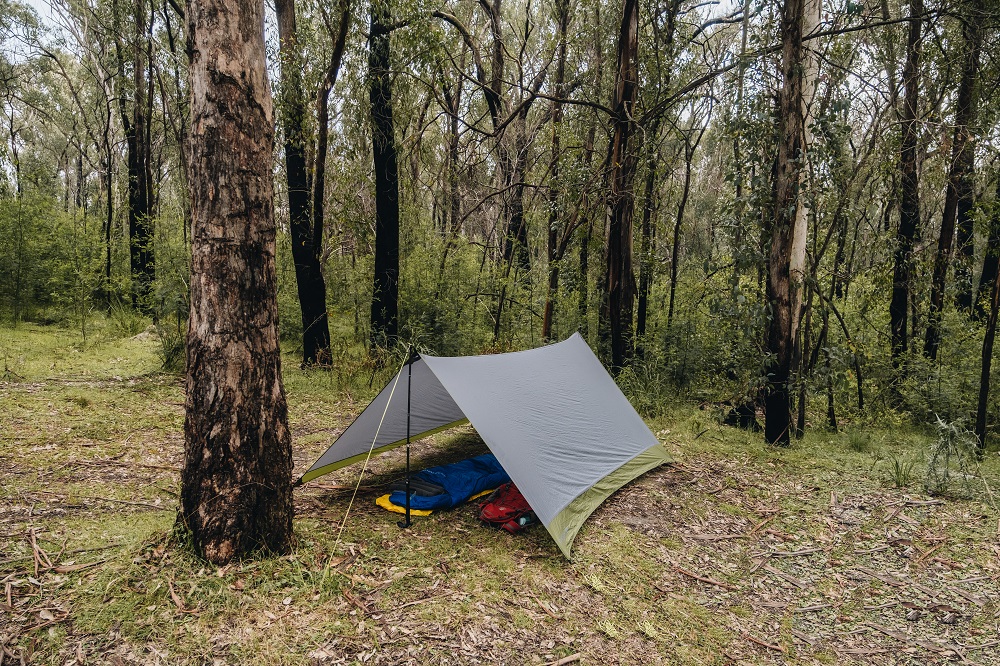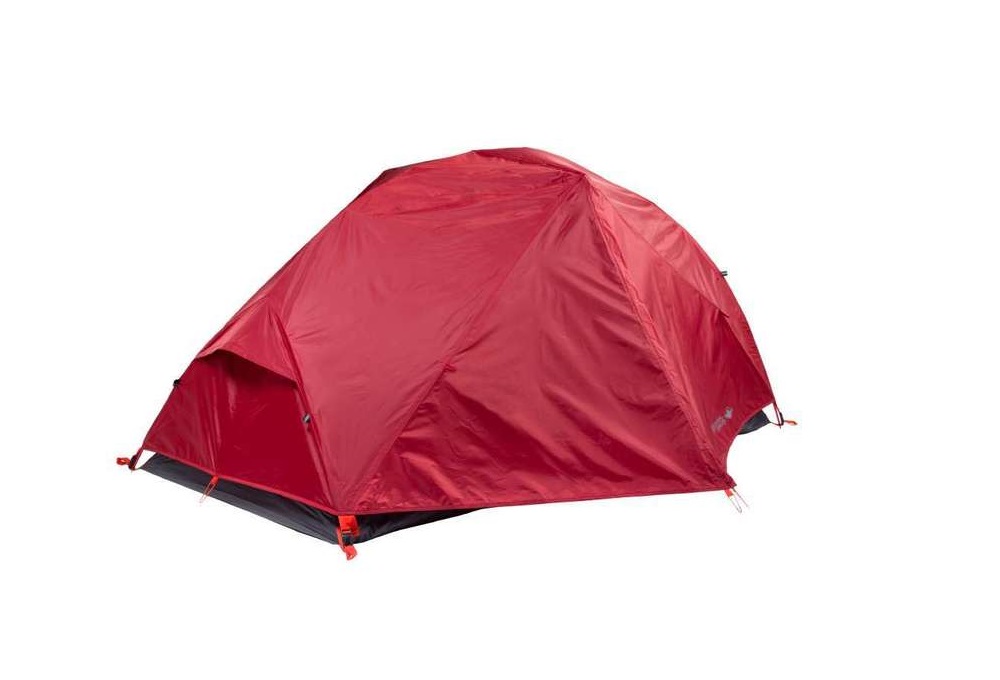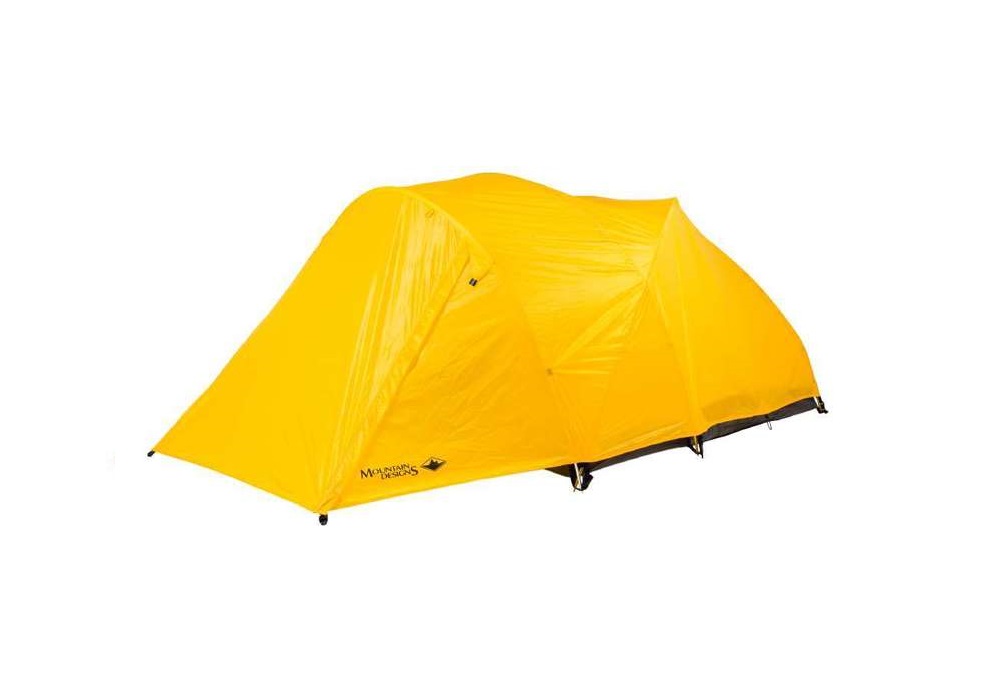| Your browser is not supported. | ||
|
Please browse our site using any of the following options:
| ||
How To - Use The Tarp 9.0 Nine Ways
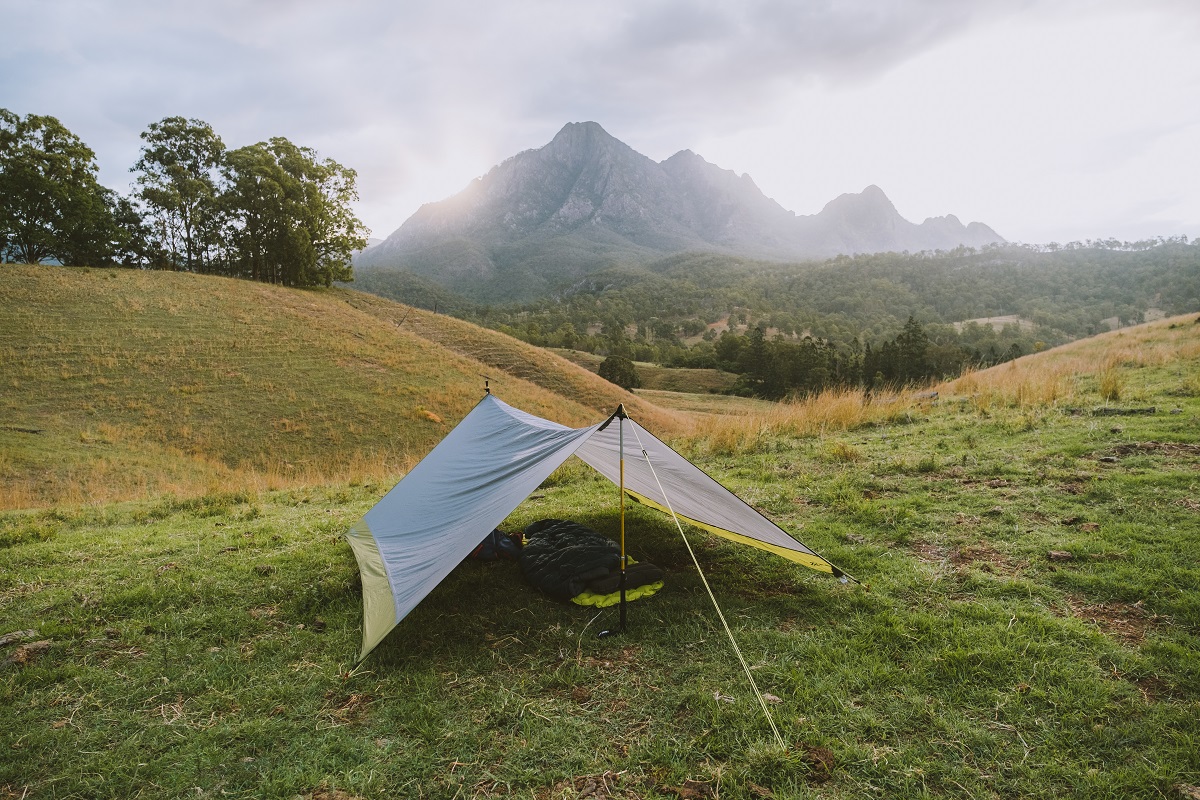
For the minimalist explorer, a tarp is arguably the most lightweight, easy-to-pack shelter. Shelter here is the operative word, however, because if you don't know how to set it up properly, you're likely not going to have a great night's sleep. Using our own Tarp 9.0, here's nine ways you can set up a tarp for reliable outdoor cover:
9 Ways To Set Up The Tarp 9.0
1. Classic A Frame. Run some paracord/rope through the centre between two trees to create a ridge line and the subsequent 'A' shape, then use pegs at each of the four corners. One of the quickest and easiest ways to configure a tarp and the set-up that's most like a standard camping tent, it provides reliable protection from wind and snow thanks to the steep-pitched sides.
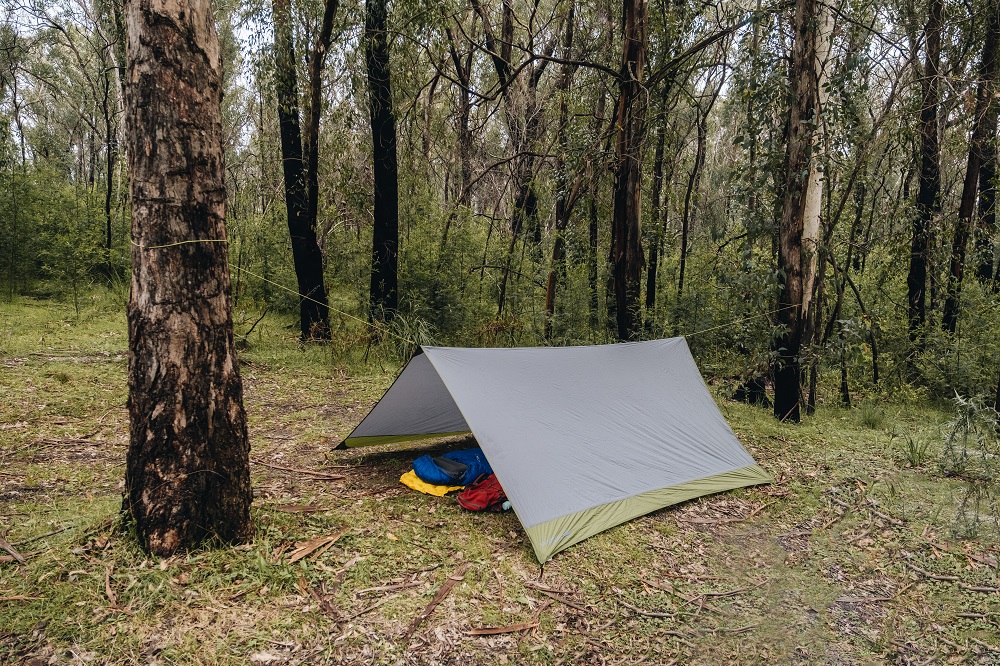
2. Rain Fly. Similar set-up to the Classic A Frame, but use tie-down guy ropes at the four corners to lift the shelter up off the ground to create air flow at ground level. The steepness of the rain fly can be configured to suit your conditions, so you might make it more acute for extra side protection (but less internal space) or flatter for additional room underneath.
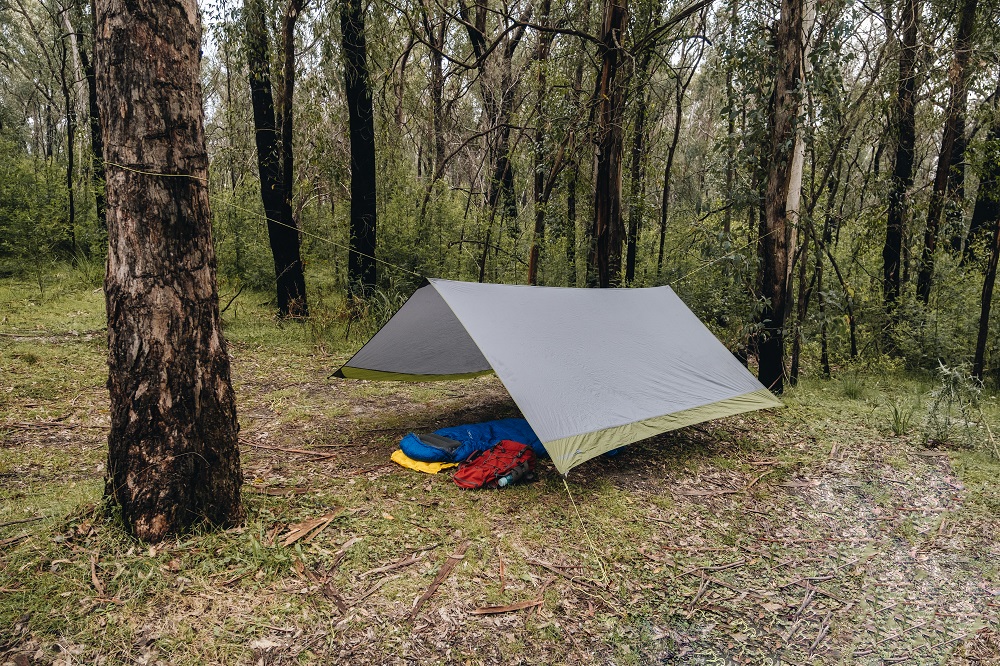
3. Envelope. Tie off some paracord/rope from two trees to two of the corners along one side of the tarp, which will then form the top of your 'wall'. Peg the centre holes and the other two corners to create your ground floor. This is a useful set-up for creating a wind break in warm but windy conditions.
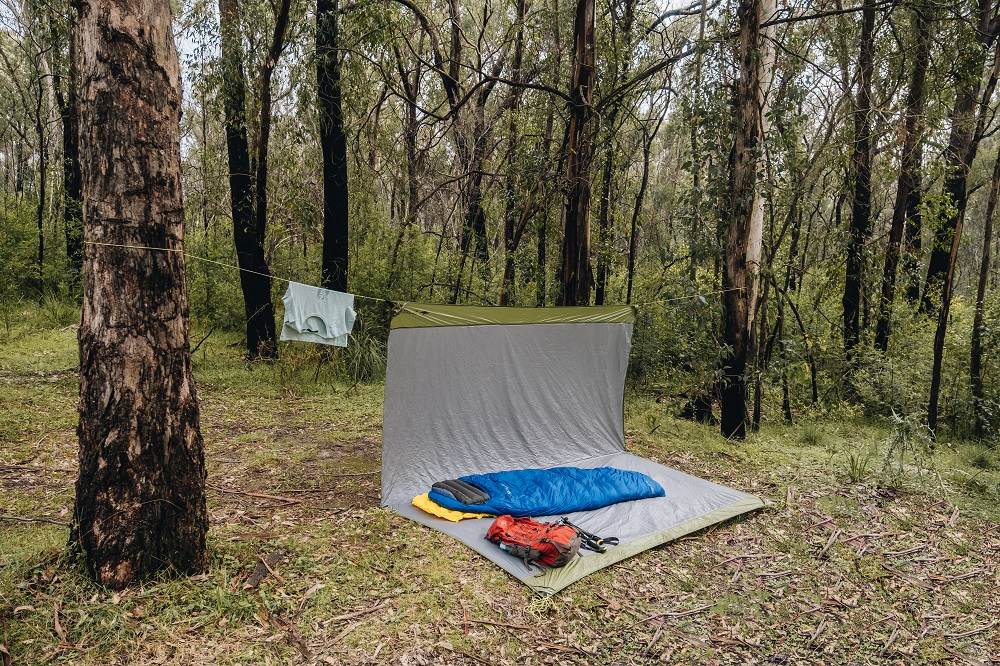
4. Ridge Line Lean To. Very similar to the Envelope, however, angle the wall on an acute internal angle rather than having it perpendicular to the ground. In this shot, the tarp is actually utilised as a floor, but with a typical lean to set-up, the tarp would actually fold over the paracord/rope at the top with the ground underneath actually exposed.
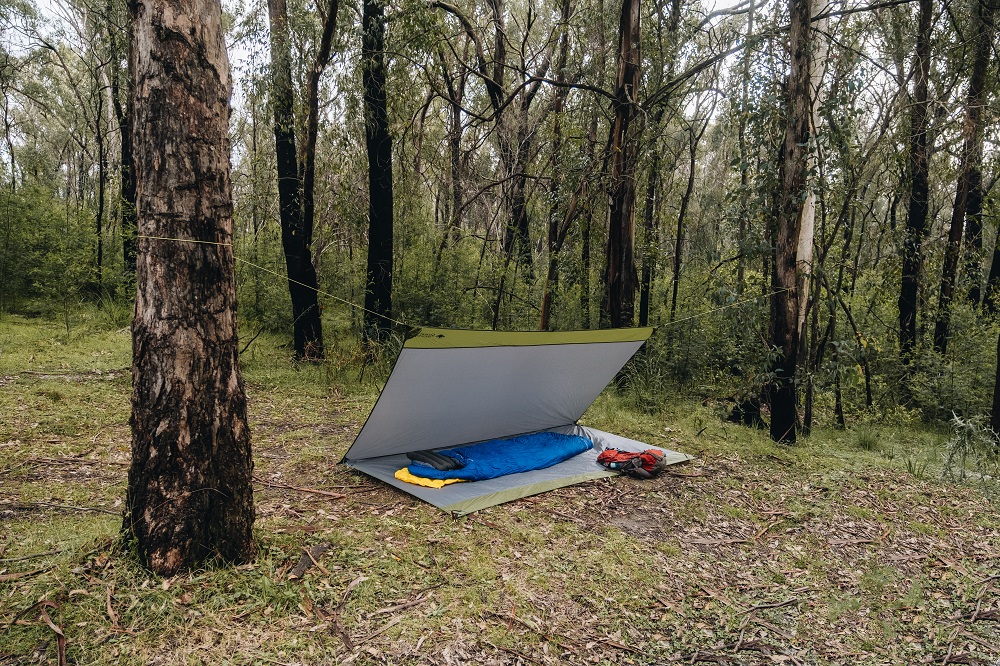
5. Arrowhead. Tie off the centre of one edge to a tree with some paracord/rope, with the adjoining corners pegged into the ground. At the other end, peg the centre hole. Tuck the sides in underneath to form the arrowhead. A nice streamline design that holds well in wet weather, but you do sacrifice a floor for internal space.
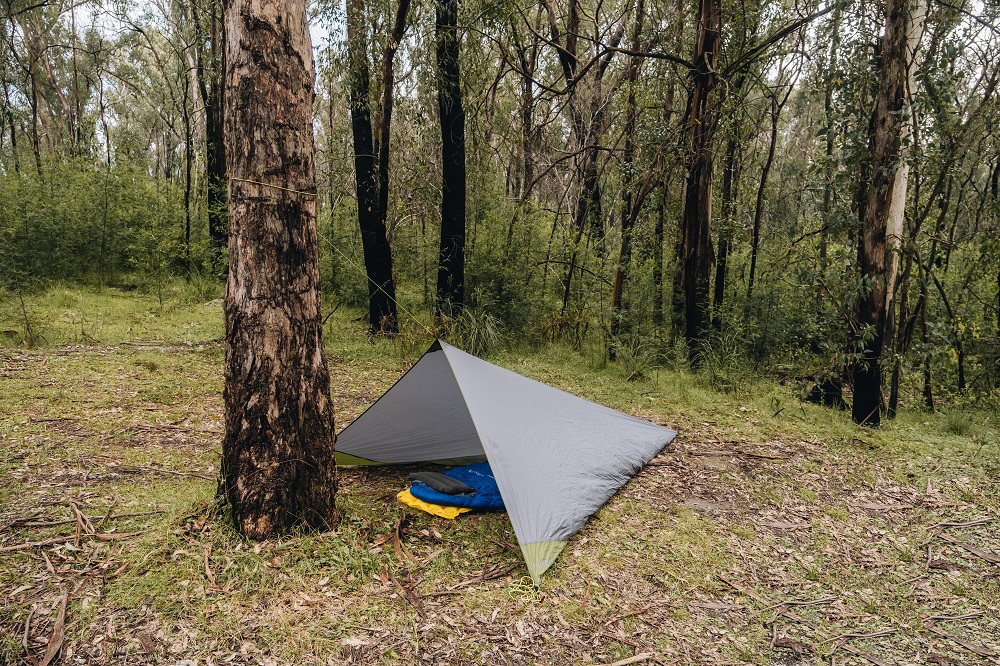
6. Basic Fly Roof. Simple set-up which maximises shade from the sun and air flow. Requires some poles for 2-4 of the tarp corners, as well as some guy ropes to provide the tension. Not the best set-up if there's rain about, as water can collect on the rooftop or penetrate the shelter from the sides in wet and windy conditions.
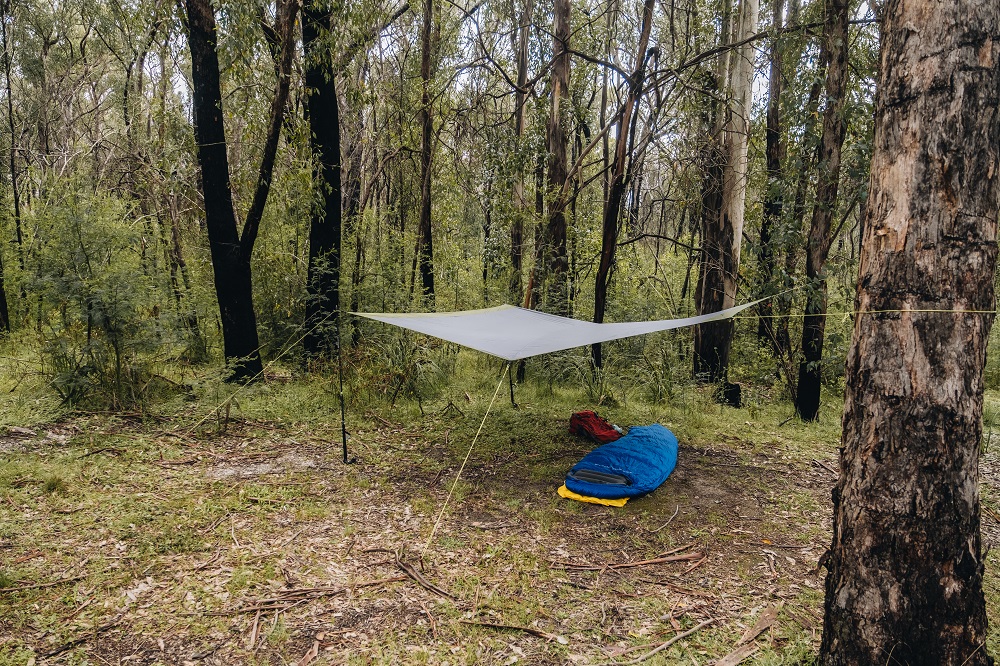
7. Forest Tent. Sometimes referred to as a Closed-End A-Frame and similar to the Arrowhead, peg out two corners of one end, then use your pole and a guy rope to build tension in the opening. At the other end, fold in to the centre and peg. Like the Arrowhead, this is a low profile set-up that keeps you well protected from wind and rain.
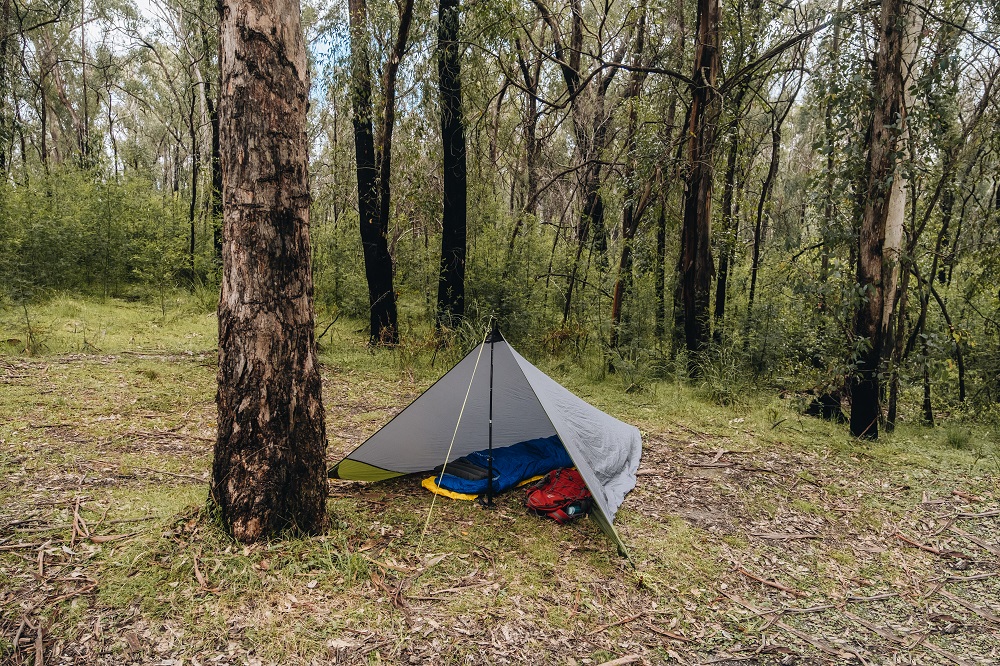
8. Inverted Ridge Line Fly Roof. Like the Basic Fly Roof, but using paracord/rope through the centre tie-down holes to create a channel. This funnels any water to the ends - just be sure to keep one end higher than the other to allow run-off in one direction.
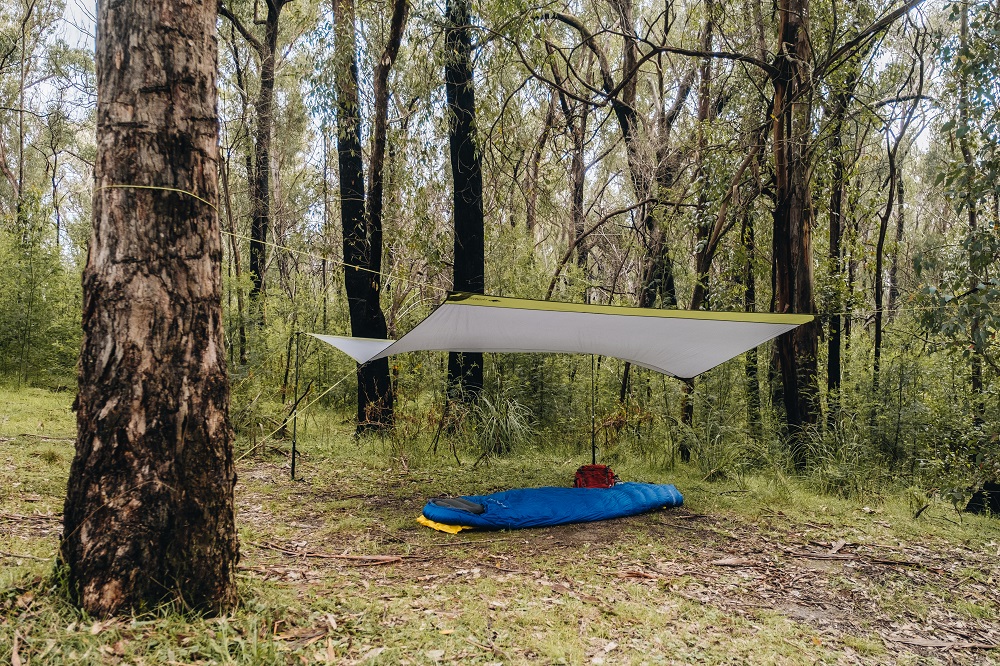
9. A Frame Tent. Very similar to the Classic A Frame, using a pole in the centre hole of each end to add tension and stability. Each corner is then pegged out. For a variation, the sides can be folded under to create a floor, this set-up known as the Body Bag.
